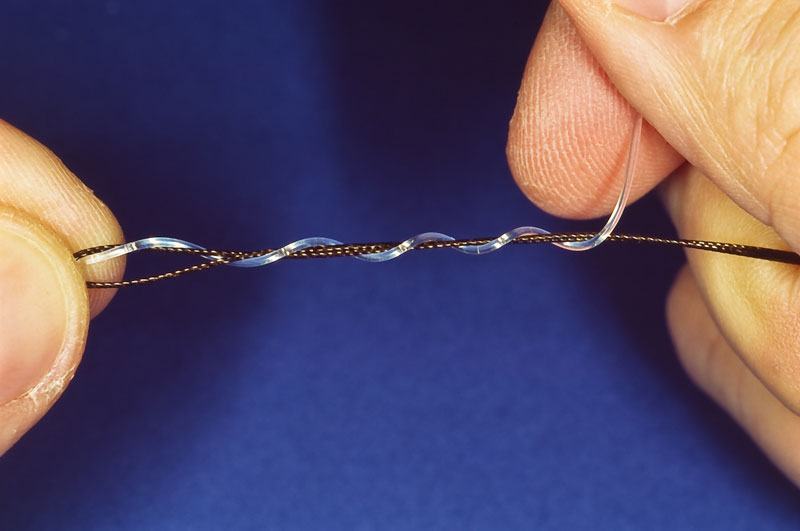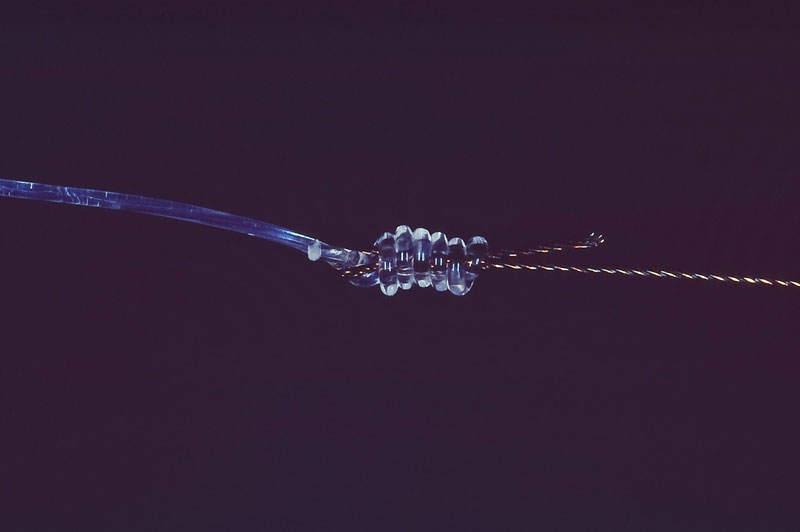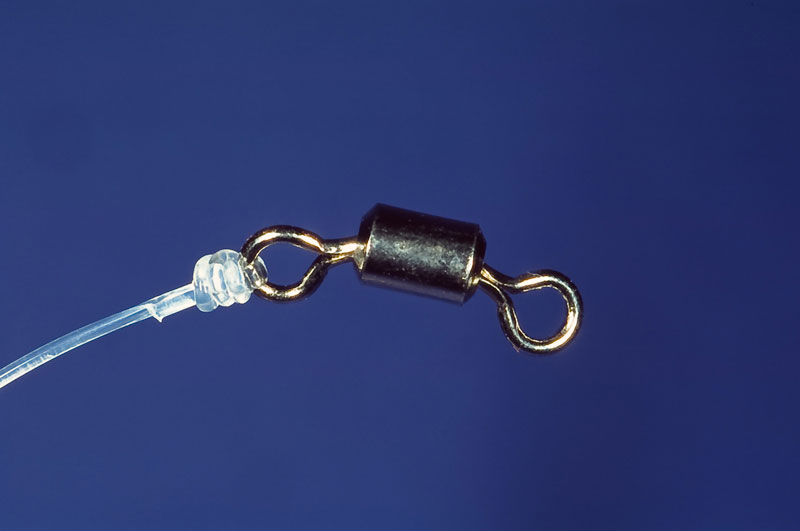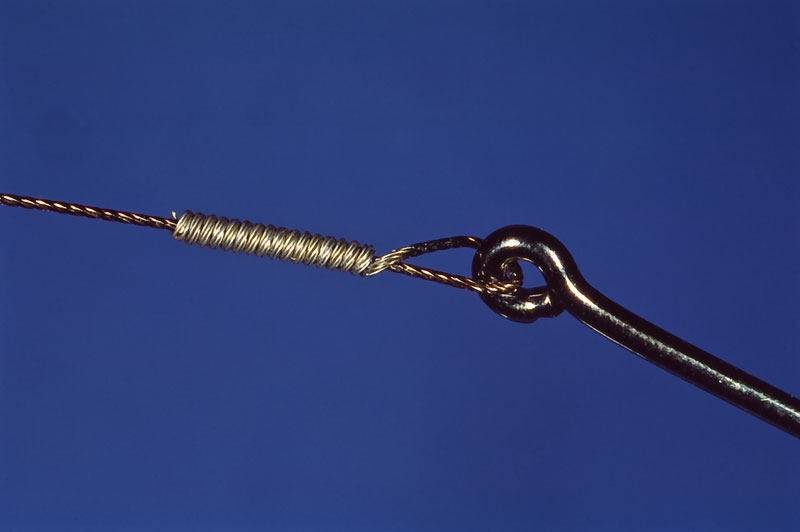Wire and crimps go hand in hand, but there is another way to construct the likes of wire tope traces. The strong and neat hot twist method is a clever alternative to crimping wire.
Heavy-duty multi-strand wire traces for big biting sharks such as porbeagles need to be constructed using crimps of one kind or another. But for more common quarry in the shape of tope, crimps are not the only option when working with wire. With the introduction of a little heat, many non-plastic coated multi-strand wires, such as Drennan 7 Strand, can be tightly twisted to form secure connections to hooks and swivels.

This neat and very simple tope rig doesn’t require any crimps. It also omits the standard swivel that might ordinarily be placed between the length of mono and the all-important wire bite-piece. The main reason that a middle swivel is normally built into this type of rig is to facilitate a coupling link between the two separate sections, so that they can be connected together. The ability to make a neat and strong knotted connection between the wire and mono makes this unnecessary middle swivel surplus to requirements. The two parts are joined using an Albright knot, which offers good, straight presentation. The usual middle swivel arrangement grants the wire-bite slackness and manoeuvrability which I personally do not like.
Before the wire can be twisted it must be prepared with brief heat from a lighter flame. Braise the last couple of inches, stroking the flame back and forward until it glows red hot. The wire cools very quickly and you will notice that the heated area has become discoloured; typically turning dull silver. It is now ready to twist.
Twizzled
Make sure that the eye of the hook is made to sit in a little kinked niche behind the discoloured portion to be twisted. This ensures the hook will be pulling on the full strength of the wire where no heat has been applied. I use a pike angler’s twizzle stick to turn the hook, but this isn’t necessary. The same effect can be achieved by simply gripping the hook at the bend, and simply turning it like a key. Neatness comes with a little practice, and the twist does not have to look pretty to be secure. Various single strand wires can also be manipulated and secured in a similar way but that is for another time.
If you wish, the final stage can be taken further, with a length of heat-shrink tubing shrunk over the body of the twist and hook eye. This affords the twist extra protection, and extends the hook out perfectly straight.
Pulling fat squashed crimps carelessly into fish baits can butcher them. One big plus of the twisted connection to hook, is that it slickly tucks inside softer fish baits without ripping them to shreds.
Neater than crimping and quick to do, it is also at least as strong as crimped connection
Follow the picture sequence below.

You will need a spool of 60lb – 100 lb non-plastic coated, multi-strand wire, clear 60lb Greased Weasel, a 7/0 hook, a large swivel, a twizzel-stick and a lighter

First we have to knot the wire to 4 – 5 feet of 60lb clear mono using an Albright knot. Begin by doubling back 4 inches of wire and feed the mono through the resulting loop

Take the mono fully around the outside of the doubled over section of wire in a complete wrap

Take the mono fully around the outside of the doubled over section of wire in a complete wrap

Make a further three reverse turns back over those already made, and down towards point of entry. Pop the tag back through the start of the loop where it came through

Lubricate the un-snug knot with plenty of saliva before pulling it up tight. Clip the wire tag-end to within ¼ of an inch

Attach a swivel to the end of the 4 – 5 feet of mono

Give yourself 16 inches of wire to work with. Heat the first 2 inches with a lighter, easing the flame back and forth until the area glows red hot. The heated area then becomes soft and workable

Bend the wire back on itself making a kink in the area immediately behind the heated section for the hook to sit in. Now, using the thumb and forefinger, tightly nip the wire together and turn the twizzle stick on the hook in your other hand

Keep the hook under steady tension and continue to slowly rotate the twizzle-stick and a tight thread of turns should begin to form behind the hook. Keep turning the twizzle-stick until the whole tag is worked into the finished wire twist.











